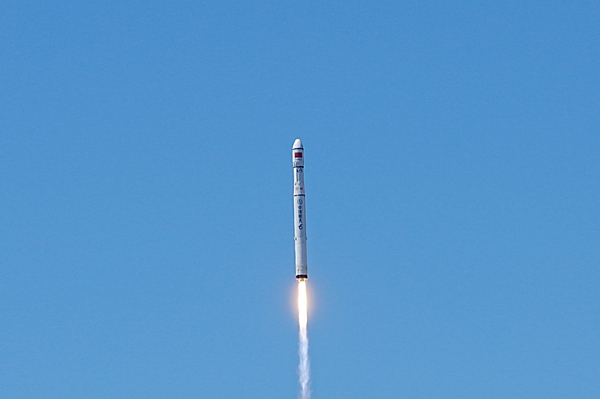The new rocket “Changzheng-6C” (Long March 6 °C) successfully placed four satellites into orbit during its first launch with a payload. The two-stage carrier, standing 43 meters tall, can deliver 2.4 tons of cargo to a sun-synchronous orbit and 4.5 tons to a low Earth orbit. The rocket employs more environmentally friendly fuel based on kerosene and liquid oxygen instead of toxic hypergolic propellants. This launch marked China’s 20th in 2024, with plans for around 100 space launches this year.
The first Long March 6 °C rocket took off from the Taiyuan launch site in northern China at 11:21 local time on May 6th (06:21, May 7th MSK). The Shanghai Academy of Spaceflight Technology (SAST), the rocket’s manufacturer, confirmed the launch’s success one hour after liftoff.
The spacecraft carried four satellites. The main payload was Haiwangxing-1, or Neptune-1, an experimental X-band synthetic aperture radar satellite weighing 239 kilograms. Neptune-1 was manufactured by SAST for Zhihui Space Tech, which plans to launch 12 operational satellites for the Neptune constellation. Additionally, Zhixing 1 °C, another X-band radar satellite, intended for the Beijing-based Smart Satellite company, was placed into orbit. Two optical satellites were also mentioned: one with wide-angle observation capabilities and one high-resolution video satellite.
The new 43-meter-tall rocket marks the latest addition to SAST’s new generation rocket lineup within the Long March 6 series. The Long March 6 °C appears as a shorter version of the Long March 6A, standing at 50 meters tall, but without the latter’s four solid-fuel boosters. Capable of lifting approximately 2.4 tons to a sun-synchronous orbit (SSO) at 500 kilometers and up to 4.5 tons to a low Earth orbit (LEO) at 160 km, these options offer greater versatility and flexibility for launches.
The Long March 6 °C is not the only new rocket from SAST expected to launch this year. The academy also plans to debut its “Changzheng-12” rocket, with a diameter of 3.8 meters, later this year from a new commercial launch site in Wenchang. It will be able to deliver payloads of 10 tons to LEO and 6 tons to SSO. Both rockets will utilize environmentally friendly fuel based on kerosene and liquid oxygen instead of toxic hypergolic propellants. However, the availability of launch sites capable of servicing them limits the pace of replacing old rockets in the Long March series.
In addition to the mentioned innovations, SAST has more ambitious, albeit currently vague, plans. In the coming years, the academy plans to debut a 4-meter-diameter rocket, possibly using methane and liquid oxygen engines developed by a commercial company. A promotional video released by SAST after the launch showcased the Long March 6A and 6 °C alongside two other rocket models. Both future models, it seems, will feature landing supports for recovery and reuse. Meanwhile, the China Academy of Launch Vehicle Technology (CALT), another division of CASC, is developing the “Changzheng-10” (Long March 10) for manned flights, including lunar missions. This rocket will also be reusable.
China’s efforts in developing reusable rockets are not limited to government programs. Private company Space Pioneer is developing the Tianlong-3, comparable in payload capacity to the Falcon 9, expected to launch in the summer. Landspace in Jiuquan is developing the Zhuque-3 rocket made of stainless steel. iSpace is working on the methane-oxygen rocket Hyperbola-3. Some of these organizations have already conducted hop tests. The first attempt at orbital launch and landing may be undertaken by Deep Blue Aerospace. In the second half of the year, they plan to launch the lightweight Nebula-1 rocket. Galactic Energy is also preparing for the first launch of the Pallas-1 rocket using kerosene and liquid oxygen this year, likely to be non-reusable.











